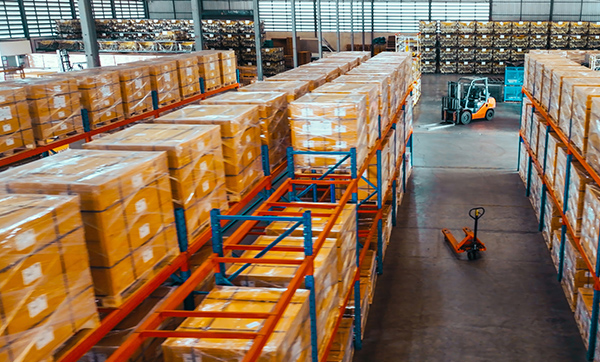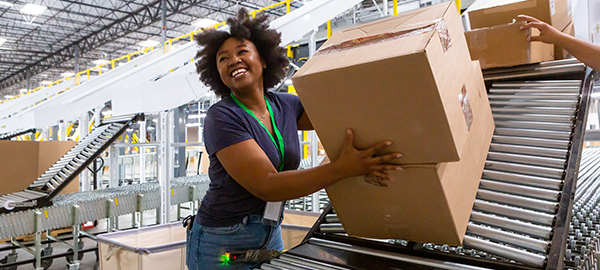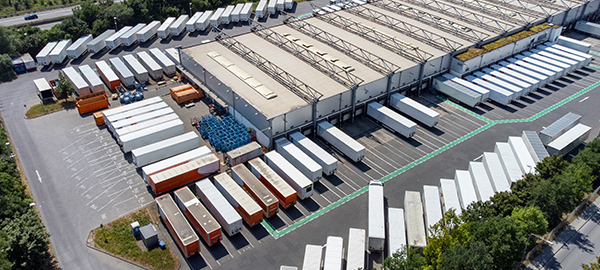Warehousing in one of the most important components in overall supply chain management. More than just storage, it serves as a pivotal link between production/procurement and distribution in the supply chain, and provides a host of other value-added benefits, as we will discuss further below.
As defined by the ASCM Supply Chain Dictionary, supply chain warehousing encompasses the activities related to receiving, storing, and shipping materials to and from production or distribution locations.

Why are warehouses important to supply chains? Warehousing services are incredibly important to the success of supply chain management because they encompass a variety of actions integral to the efficient and uninterrupted flow of goods, including:

There are several different types of warehouses:
Private warehouses are owned and operated by suppliers, manufacturers, or distributors. Larger companies, like Walmart or Target, typically have their own warehouses to maintain control over handling and storage of materials.
Smaller companies and startups usually rent public warehouse spaces on a contractual basis. This gives them control over costs and access to service additions, like automation and improved efficiencies.
Bonded warehouses are government-licensed storage facilities that provide a secure environment for valuable, imported, and duty-free items, such as pharmaceuticals. Bonded warehouses enable manufacturers to control costs by deferring payment until goods are sold or shipped.
These are public warehouses owned and operated by organizations of farmers or similar groups. They are typically used to store and distribute produce and allow cooperative members to reduce transportation and packaging costs while maintaining a high level of customer service.
These “smart” warehouses offer state-of-the-art technology to streamline the process and are an optimal solution for companies focused on growth and efficiency. They can handle large quantities of products while maintaining accuracy in order fulfillment.
These warehouses are specially constructed to maintain a set low temperature and are ideal for temperature-sensitive materials like medications, cosmetics, and food/drinks.
While distribution centers can provide storage, they differ from a typical warehouse because they also offer value-added services like product mixing, order fulfillment, cross docking, and packaging.

Let’s review the main components of a typical warehousing system and how they work together:

Strategically located warehouses ensure you have enough product in stock to meet customer demand for proper capacity planning. If your products are temperature-sensitive, climate-controlled warehousing will preserve your goods and keep them safe.

More and more companies are utilizing sophisticated warehousing platform technologies to track products and forecast demand for more accurate purchasing/manufacturing decision making.

Warehouses themselves serve as consolidation points for goods from multiple suppliers. This allows you to merge products for larger, combined orders and divide large shipments into smaller orders for individual customers, known as break-bulking.

Warehousing plays a significant role in receiving inbound shipments and picking, packing, and shipping outbound orders, contributing to the all-important timely delivery of product to customer.

If you are selling fast-moving consumer products or perishable goods, you may need to transfer your products from inbound trucks to outbound trucks immediately upon arrival. This cross-docking technique used in warehousing expedites your speed to market.

From packaging, labeling, and customization of products, warehouses also offer a range of value-added services that enhance overall customer service and help elevate your brand’s reputation.
The challenges of successful supply chain warehousing lie within designing and maintaining a disciplined and responsive orchestration of elements and events. Cracks can easily begin to appear in inventory accuracy, delivery times, and quality of product if any of these things are not managed properly.
Integrating effective warehousing can have a significantly positive effect on your entire supply chain in numerous ways:
Cost Effectiveness
Having a centralized warehouse network allows your business to negotiate better bulk purchase deals and benefit from lower storage costs. Strategically placed warehouses also give you the leverage to negotiate transportation costs.
Improved Customer Service
Proper warehousing storge will enable you to optimize inventory levels and minimize stock-outs, which means the products your customers want will always be available. In addition, efficient operations will improve order fulfillment and delivery times, keeping your customers happy and your brand untarnished. It also offers the possibility of value-added services, such as gift wrapping, product customization, and returns processing, further enhancing the customer experience.
Flexibility and Scalability
Outsourcing your warehousing provides you with a third-party storage capacity that can be easily expanded or minimized to meet the changing needs of your business.
Enhanced Visibility and Real-Time Tracking
Today’s advanced integrated warehousing technology allows you to centralize data for a comprehensive view of stock levels, location details, and order status, giving you clarity and control over operations for optimal decision making.

The following links provide more in-depth information on other supply chain topics:
Subscribe today and you’ll receive valuable supply chain insights from the top leaders in the industry that will help you do your job better, faster, and more efficiently. From industry news to insider tips and trends, Signals delivers a quick read on the latest information on supply chain management right to your inbox.
